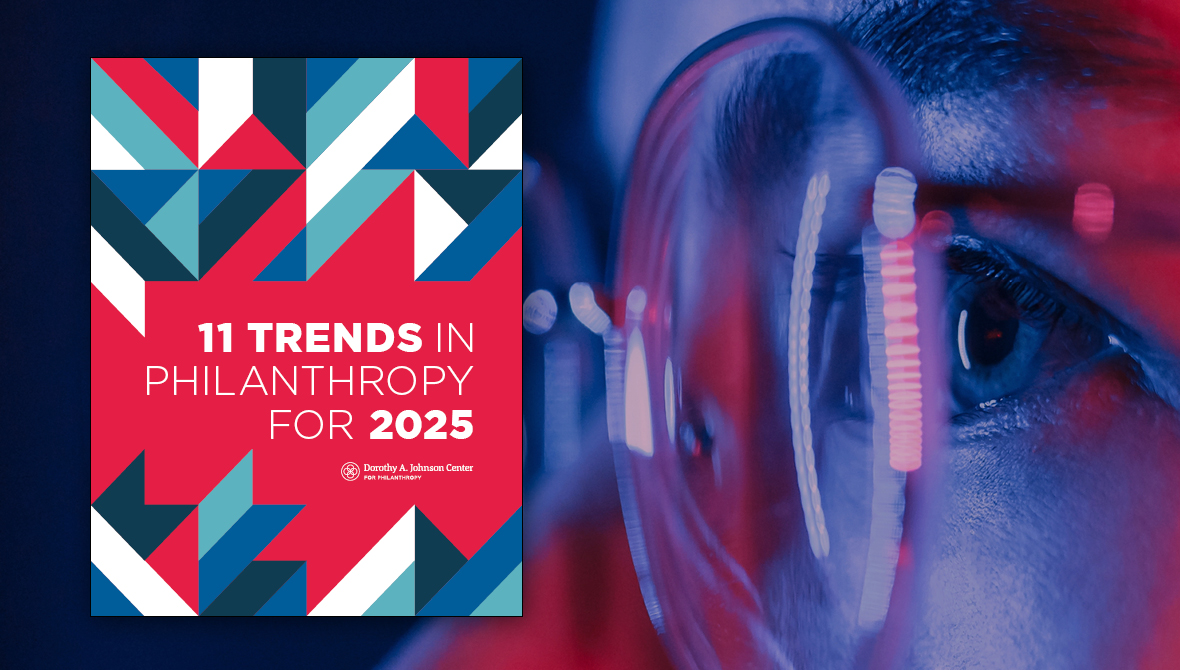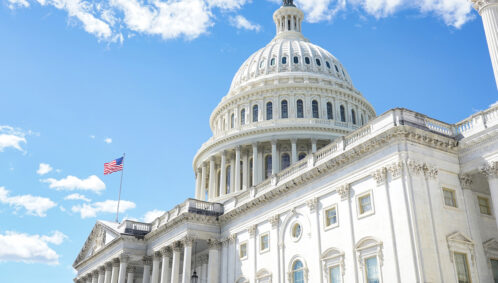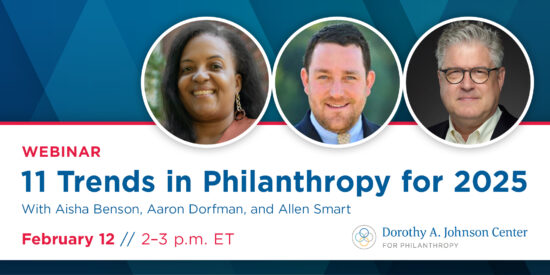11 Trends in Philanthropy for 2025


It’s remarkable to think that five years have passed since the world first went into lockdown. Five years since the COVID-19 pandemic reshaped our daily lives and presented us with challenges unlike any we’d faced before. Half a decade later, we’re left to reflect on how much has truly changed — and what remains the same.
In 2020, philanthropy responded swiftly to the crisis, adopting practices nonprofits had long championed: streamlined reporting, simplified applications, and flexible funding that prioritized general operating support. These shifts brought hope for lasting transformation. Yet today, many funders have returned to pre-pandemic norms, leaving us to wonder if those changes were ever meant to last.
Movements like Trust-Based Philanthropy and efforts to advance racial equity seemed to make extraordinary gains, but they now face renewed challenges and critiques. And while foundation grantmaking has increased, overall charitable giving — once adjusted for inflation — has declined, even as that inflation continues to stretch nonprofit, government, and household budgets to their limits.
One constant remains: the growing demand for the essential services and resources nonprofits provide to help communities thrive. Five years on, the call to support and sustain these organizations is louder than ever.
This year’s 11 Trends report explores many of these issues and others — attempting to look beyond the pendulum swing and into a future where innovations in philanthropy and community-building may yet achieve the transformations we all hope to see.
We are deeply grateful to the generous donors of the Lubbers Philanthropy Innovation Fund who made this work possible.

Collective giving is a philanthropic phenomenon with deep roots in global traditions and extraordinary modern growth. From 2017 to 2023, this movement galvanized over 370,000 individuals in the U.S. alone to donate more than $3.1 billion. New research highlights how collective giving is diversifying philanthropy, empowering marginalized voices, and redefining generosity beyond financial contributions.

The nonprofit sector is facing critical challenges from state and federal policymakers in the coming months and years — including upcoming tax code rewrites and growing interest in regulating donor-advised funds, anonymous donors, and more. Led by the “Big Five” advocacy organizations, more nonprofits are engaging in lobbying activities to shape the environment in which they work. This article unpacks the hurdles, successes, and future opportunities shaping the sector’s evolving role in policymaking — and why it matters now more than ever.

While broad-based research into the phenomenon of “limited-life philanthropy” — also called spend-down, sunset, or even sunrise philanthropy — is still fairly limited, it’s clear from the headlines that an increasing number of philanthropic families and foundations are choosing to adopt this approach. What’s driving this shift? What challenges and opportunities are uniquely posed by these accelerated timelines, and how is this trend reshaping the philanthropic landscape? Lessons and legacies are already beginning to emerge.

The charitable sector stands at a crossroads as the tax code’s impending 2025 overhaul promises sweeping changes. With provisions of the 2017 Tax Cuts and Jobs Act set to expire, philanthropy faces a “perfect storm” of declining trust in institutions, shrinking donor bases, and reduced tax incentives for giving. This article unpacks the forces reshaping the sector, the challenges nonprofits must navigate, and the high stakes of proposed policy reforms. As lawmakers prepare for what’s being called the “Superbowl of Tax Law,” the philanthropic community must decide how to engage — or risk being left behind.

As a society, we are entering uncharted territory as the U.S. population ages rapidly, reshaping social, economic, and philanthropic landscapes. By 2034, older adults will outnumber children for the first time, amplifying the urgency to address their unique needs. Although the number of grantmakers funding aging services has surged by 225% in a decade, nonprofits and philanthropy face critical challenges related to this topic, including declining volunteerism, evolving donor demographics, and a looming retirement crisis. As aging issues gain prominence in public policy and philanthropy, stakeholders must embrace innovative approaches to ensure equitable and sustainable support for an aging nation.

Since its inception in 2012, GivingTuesday has become a touchstone of global culture, raising over $13 billion and engaging givers from everywhere. It has also helped to spur a wave of organization-specific giving days that leverage the familiarity and model of the 24-hour digital event to build community and drive donations from first-time and repeat donors alike. The model’s flexibility makes it an appealing strategy for organizations as diverse as Purdue University and the Communities Foundation of Texas — as long as the proper time and attention are allotted to the effort.

Effective volunteer management and engagement can strengthen nonprofit capacity, rebuild trust, and even bolster donor retention. Yet, volunteer programs remain underfunded and undervalued, despite evidence linking them to broader philanthropic participation. To sustain and grow volunteerism, nonprofits and funders must invest in strategic volunteer engagement, research, and capacity-building efforts — and rethink their volunteer opportunities to fit the needs of new generations.

The U.S. is facing a national shortage of healthcare workers — driven by post-pandemic burnout among professionals, growing demands for services from an aging population, rising education costs, and more. From multimillion-dollar philanthropic gifts funding tuition-free education for medical students to collaborative initiatives and government-backed programs training individuals for healthcare careers, this trend highlights the diverse and impactful strategies aimed at ensuring access to care.

Philanthropy’s commitment to social justice surged following the tragedies of 2020, but the momentum has waned amidst rising political polarization and backlash against diversity, equity, and inclusion (DEI) initiatives. This decline in support is compounded by significant shifts in public opinion, legal challenges, and changes within institutions, including higher education and philanthropy itself. As organizations grapple with these pressures, marginalized communities risk losing essential support systems — and what progress we have been able to make in the first half of this decade.

Philanthropy is playing an increasingly vital role in fortifying democracy, with billions of dollars now invested in areas like voting rights, fair elections, and civil discourse. Since the 2016 election, this funding has surged, but challenges like inequitable access to civic resources and a “boom-and-bust” funding cycle persist. To address these issues, funders are working to smooth out funding patterns, coordinate efforts, and provide greater visibility to the democracy ecosystem. With innovative tools like digital mapping platforms and civic health indices now available, the push to ensure a more equitable and sustainable democracy is gaining traction.

While research shows a clear link between staff wellness and organizational performance, many nonprofits struggle to prioritize employee care due to persistent challenges — including the strains of inflation, limited funding, growing demand for services, and rising personnel costs. More and more organizations and communities are experimenting with innovative programs and strategies for managing this crisis — even the U.S. Surgeon General has released a Framework for Workplace Mental Health & Wellbeing. But skepticism remains as to whether or not our field will finally make progress against one of it’s oldest nemeses: burnout.

Watch an engaging conversation with a panel of field experts about the latest trends in philanthropy and their relevance to the daily work of nonprofits, foundations, donors, advisors, community members, and others. Featuring special guests Aisha Benson, Aaron Dorfman, and Allen Smart.